We are used to seeing birds flying around in the sky. Seeing a bird on the ground is not only unusual. It means there’s likely something wrong with it.
Here’s a guide to help you tell if bird won’t move but Is alive and needs care and how you can help.
Before you scroll further down this guide, check out these other bird-related articles: Why Do Birds Kiss? and Best Bird Rescues in Australia.
How To Help An Injured Bird
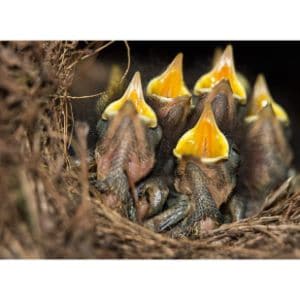
Wild animals should only be handled and treated by licensed Wildlife Rehabilitators.
Having the proper training and experience is key to caring for wildlife effectively so that it maintains the natural behaviors that allow it to live in its natural habitat. Possession of wildlife without appropriate permits is illegal.
Step 1: Make Sure the Animal Actually Needs Help
When dealing with wildlife, it can be difficult to determine whether the animal is fine or in distress. Identifying whether rescue is really necessary is the first step.
Step 2: Choose A Proper Container
In the event that an animal needs assistance, it must first be contained in a way that will ensure that both you and the animal are safe from further harm.
You should place an injured bird in a cool, safe place after placing it in a cardboard box with a lid or towel over the top. As soon as a bird is injured, it goes into shock, and many times it dies as a result.
Birds that have hit windows and are still alive may just need a little time before regaining their senses and then are able to fly away.
Never force feed or water a bird. Make sure you open the box every 15 minutes to see if the bird can fly away.
Step 3: Take The Animals To A Wildlife Rehabilitator
While the animal is being treated, place it in a place that is dark, quiet, and warm away from people and pets.
Wildlife Rehabbers should be contacted ASAP to provide immediate treatment to the animal. In order to have a chance of survival, the animal must receive help as soon as possible.
If you wait too long to get it the proper care, its condition will deteriorate quickly, and it will likely not live.
What To Do If A Bird Is Alive But Not Moving?
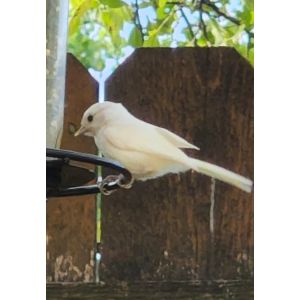
Birds, especially in the wild, are unlikely to expose themselves in this manner. The situation is dangerous and could lead to their death.
Birds on the ground who are not moving are likely injured or sick. In most cases, they do it when they are no longer able to fly and are likely to die soon.
In the event that a bird won’t move, you should pick it up to check on its health.
Test this by letting the bird out to see if it takes off. Veterinary care and/or a wildlife rehabilitation center can provide more information if the animal does not respond to treatment.
When a bird is dying, it will often lie on the ground still. As well as being puffy, weak, and chirping, this is a common sign.
How Do You Tell If a Bird Is In Shock Or Dead?

Shock manifests itself in fluffed up birds, unresponsiveness, slow breathing, and weakness.
The bird will still be breathing if it is stunned. It might appear to be breathing out of its mouth with an open beak.
Though the breath might be extraordinarily slow, it is still breathing. Having an open beak and breathing through its mouth indicates shock in a bird.
If the bird needs to be kept in a dark, quiet environment, place it there. Keep the bird in a peaceful environment, and do not stimulate it.
Moving it might result in more damage if there is visible damage. The following instructions will guide you through moving it into a safe place from the wild.
Make sure that you place it carefully inside a cardboard box. You can cover it with a towel or a lid that allows air to pass through.
You should store the box in a cool (but not cold) and safe environment. When a bird is injured, it can easily go into shock. The shock and injuries often result in a bird’s death.
In order to heal, the bird needs a quiet, dimly lit environment. It is recommended that the temperature be warm, and it should be humid, if possible.
Depending on the impact the bird sustained, the length of time it remains in shock varies.
Depending on the severity of the impact, the bird could take several hours to recover. Sometimes, it doesn’t take that long. During the recovery period, you should not stimulate the bird while it is still in shock.
How To Help a Stunned Bird
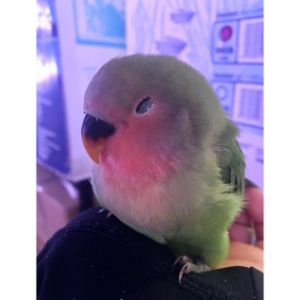
Observe the bird closely first. It is important to watch the bird’s reaction before you touch it.
When you approach a bird, how does it react? If it doesn’t react, there’s a good chance it’s unconscious. In most cases, the bird will recover within a few minutes if it is still conscious and has no serious injuries.
Nevertheless, if the bird appears badly injured, and it seems to be in pain, it may need your help.
It is important to check for injuries. Whenever you come across an injured bird, handle it with great care and be gentle. Ensure the bird is not injured if it has lost consciousness.
Check for any obvious injuries. Ideally, you should contact a wildlife center or authority if you see that the bird has more serious injuries.
In the event that the bird has been stunned, you should keep it in a safe and sheltered place. It is best to keep the bird in the same place where you found it.
You want to protect it from other animals, so add it to a box or move it to a safe place that isn’t too far away. Even though a box may not seem like much protection, it could help keep predators or even children away.
It will be safer if the bird gets some shelter and can fly away again when it is ready.
A cloth or newspaper liner is best for lining the box and gives the birds something soft to rest on. Close the box if it can be ventilated enough to still allow the bird to breathe easily.
In terms of recovery time, it depends on how severe the impact was on the bird. The bird’s recovery will take a few hours if it has been severely injured.
In milder impacts, it may only take a couple of minutes. If you don’t see it getting any better, you may need to take it somewhere to get proper medical care.
When the bird has gained some more movement and is more active, you can release it back into its natural habitat.
In the event that you have moved the bird inside, take the box back outdoors where you originally found it. The bird will be able to find its way again once it is liberated from the box by doing this.
Birds take a few seconds to get up and moving again once they are moving again.
Flying out of the box may occur immediately, but it may not go very far. In order for the bird to fly away, it will need to become comfortable.
Why Is My Bird Not Moving?
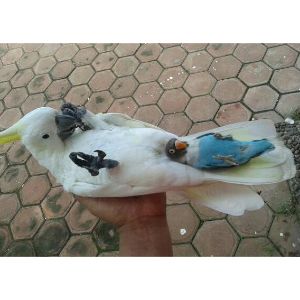
There are many reasons why a bird may not be able to move. It could be suffering from something obvious, or it could be something behavioral. Here are some of the most common reasons.
It’s Sick
A bird may not be moving because it doesn’t feel well. As animals, they, too suffer from unexpected illnesses.
Birds are vulnerable to a number of diseases, so it is vital to take them to the vet on a regular basis.
An infection may also contribute to a bird’s stiffness. Typically, bacteria, viruses, or fungi cause infections. The bird may experience different effects on different parts of its body.
It’s Hurt

Possibly the bird is lying on the ground because of an injury. There are several ways in which they can harm themselves. An injured bird can be inactive due to the following injuries:
Broken Bones
A fall or a blow to the head can cause a bird to break a bone. This can occur if a bird runs into a window or if it is swatted by someone chasing it away.
Head Injuries
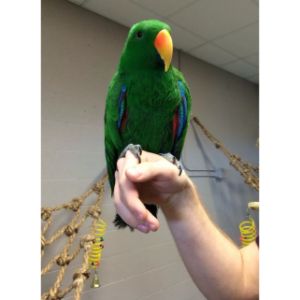
A bird can get a concussion if it is struck by something or falls from a great height.
Wounds
These injuries can be caused by attacks from other animals or getting caught on something. Wild birds are even more likely to be injured due to people or predators trying to hunt them down.
It’s Old

As birds get older, they tend to move less. They are also more prone or illness and injuries, which can cause them to stay still.
It’s Dying
Before a bird dies, it may stop moving. When a bird dies, one common symptom is that it stops moving and has trouble breathing. Lethargy could contribute to the lack of movement.
Usually, you’ll find that the bird appears to be very still and has difficulty breathing. Such an environment makes it difficult to observe birds. A professional is the best person to contact to find out exactly what’s going on.
It’s Playing Dead

Usually, ground-dwelling birds like quails, partridges, and plovers possess this ability.
Due to the fact that they are typically found on the ground, most of these species are vulnerable to predation from predators such as foxes, snakes, and cats.
This ground-dwelling bird freezes in place when it detects a predator in the vicinity in order to avoid becoming a meal.
As they lie on their side with their eyes closed and their bodies limp, it appears that they have already passed away.
In some cases, this strategy works, but in others, it’s not enough to fool the predator into believing the bird is no longer valuable.
Birds have a better chance of escaping predators if they move on in search of easier prey.
Be careful not to assume a bird is dead just because it’s lying still on the ground while hiking! There may just be a game of possum going on until everything calms down.
Can An Injured Bird Heal Itself?

If a bird is injured, there is a good chance it may heal on its own. It really depends on the injury and how severe it is. If the bird has suffered a serious injury, it may require veterinary care.
If it has a broken wing or another injury that prevents it from flying or moving, it may be able to heal, but a predator may get to it before it has a chance.
Sometimes it’s hard to tell what type of injury a bird has.
You may not think they are injured to seriously, but it could be suffering from internal injuries that you don’t notice. Birds that are able to heal on thier own should recover quickly.
If you notice a bird is taking longer than it should to move around and recover, it could be suffering from a more serious injury.
If you have a pet bird, you will want to take it to a vet, and if you happen to find a wild bird that is suffering from a serious injury, you will need to take it to a wildlife rehabilitator.
If you find this guide, “Bird Won’t Move But Is Alive – What Should I Do,” informative and helpful, you can check out these other animal-related articles from our team:
- My Cat is in Heat and Won’t Shut Up – What Should I Do?
- Should I Get Rid of My Dog?
- How Often Should I Bathe My Goldendoodle?
You can learn more about this animal by watching “Amazing Facts About Birds” down below:




